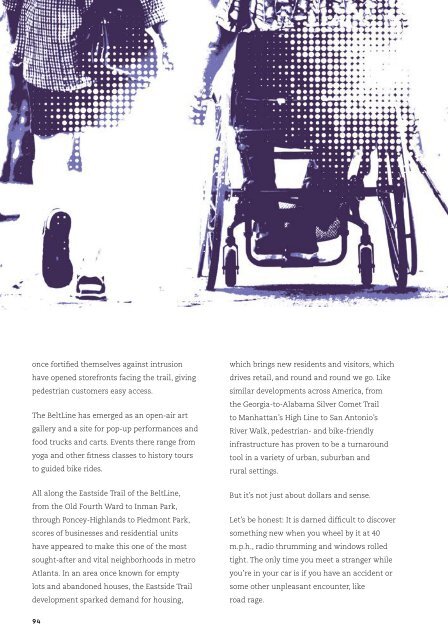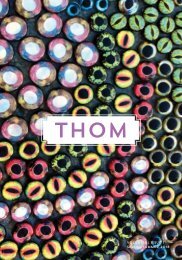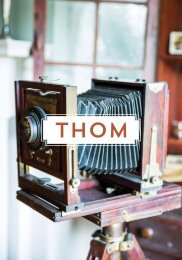Create successful ePaper yourself
Turn your PDF publications into a flip-book with our unique Google optimized e-Paper software.
CONNECTORS<br />
once fortified themselves against intrusion<br />
have opened storefronts facing the trail, giving<br />
pedestrian customers easy access.<br />
The BeltLine has emerged as an open-air art<br />
gallery and a site for pop-up performances and<br />
food trucks and carts. Events there range from<br />
yoga and other fitness classes to history tours<br />
to guided bike rides.<br />
which brings new residents and visitors, which<br />
drives retail, and round and round we go. Like<br />
similar developments across America, from<br />
the Georgia-to-Alabama Silver Comet Trail<br />
to Manhattan’s High Line to San Antonio’s<br />
River Walk, pedestrian- and bike-friendly<br />
infrastructure has proven to be a turnaround<br />
tool in a variety of urban, suburban and<br />
rural settings.<br />
All along the Eastside Trail of the BeltLine,<br />
from the Old Fourth Ward to Inman Park,<br />
through Poncey-Highlands to Piedmont Park,<br />
scores of businesses and residential units<br />
have appeared to make this one of the most<br />
sought-after and vital neighborhoods in metro<br />
Atlanta. In an area once known for empty<br />
lots and abandoned houses, the Eastside Trail<br />
development sparked demand for housing,<br />
But it’s not just about dollars and sense.<br />
Let’s be honest: It is darned difficult to discover<br />
something new when you wheel by it at 40<br />
m.p.h., radio thrumming and windows rolled<br />
tight. The only time you meet a stranger while<br />
you’re in your car is if you have an accident or<br />
some other unpleasant encounter, like<br />
road rage.<br />
94














